Although Cinque Terre is Italy’s main ‘small town’ tourist draw for a good reason (with brightly-colored houses, the shimmering blue sea, and vineyards climbing up rugged mountains, what more could you ask for?), we decided to check out a much less-visited group of small, quaint Italian towns. The group of towns, apparently called the ‘Walk of Olives’, is a set of small, walled towns tucked into hills above Italy’s Ligurian Coast, just a few miles from the French border. We especially thought the town of Apricale looked appealing, so we decided to try to visit it as a day trip from nearby Menton in France.
The first challenge was to get to the place. Unlike Cinque Terre, these particular towns have pretty much zero information in English on the internet. We could see from Google Earth that they were situated along a valley that ends in the Italian border city of Ventimiglia, so we decided to head there and look for onward transport.
After we arrived, we told the train station ticket seller we wanted to get to Apricale. She responded with a doubtful sigh. She explained that we had to take a bus to the place, so we set off into town to look for a bus stop. Eventually, we found this.
After a while a bus came, and we asked if it went to Apricale. The driver said no, but he could get us pretty close, and then we can get off and walk. He took us thirty minutes up the valley, where we were dropped off in the town of Isolabona, from which point it’s another half hour up to Apricale by foot.
A few minutes into the walk, Apricale’s spectacular setting first comes into view.
After getting a good workout and dodging many speeding cars on hairpin turns in the process, we had arrived. We headed up the spine of the hill towards the center of town.
Apricale doesn’t really have streets. It’s more like a three-dimensional maze of stone alleyways, with a surreal lost-in-time feeling.
On the side streets, you get a totally different feeling from Cinque Terre. People are legitimately surprised to see you, and happily greet you as they feed their cats and wander the sleepy streets.
The town is big on public art, and it shows. The old, stone walls are filled with paintings, and artistic mailboxes abound.
Eventually we arrived in Apricale’s main square. By this point it was clear to us that undiscovered Apricale makes a solid case for ‘diamond in the rough’ status.
When you’re standing in the square right in front of Apricale’s main church, it feels like you’re on solid ground…
…but you’re actually on someone’s roof!
We hiked up over the town for a view.
Apricale is full of cats. The locals put out dishes of food for them.
Although Apricale does have a budding tourist industry, it’s not immune from the demographic realities of modern Italy. The country as a whole has had stangant population growth, and rural areas have been steadily depopulating. Apricale’s population has shrunk by about 75% in the last century.
As a result, many of the town’s beautiful 19th century houses are crumbling. Although there are a handful of tourist-oriented businesses near the main square, you don’t have to wander far into the darker alleyways to see that many of the buildings are boarded up and falling apart. Sadly, such a huge portion of the buldings are abandoned that it seems inevitable more will turn out like this one, barring a substantial influx of tourists.
The overgrown old road into town.
Apricale’s open-air old church dates from the 15th century.
We were surprised to see that the church seems pretty well maintained!
After spending a few great hours in Apricale, we made the hike back down to Isolabona.
Isolabona is set at the confluence of two fast-moving rivers, with a hillside fort above.
The fort looks over the city walls below.
Isolabona’s main street.
Although Isolabona lacks the spectacular hilltop setting of Apricale, the streets are equally charming, with cobbled lanes that wind underneath houses and are overlooked by flower-filled windows.
This street is named Vicolo Oscuro, which literally means “Dark Alley”. Unlike most dark alleys, this one is more like a tunnel under houses, so it’s dark 24/7.
Across the river, the newer part of town sits along the main road in the valley. Here we enjoyed a nice cappuccino with the locals.
Since we were in the area, we decided to stop in the town of Dolceacqua on the way back to Ventimiglia.
Dolceacqua has a beautiful setting, with the labyrinth of its old town rising up to the fortress, and the stone bridge making its way across the river.
Outside of the extremely dense old town.
Although we were exhausted from all the walking at this point, we spent a while exploring the old city.
As the closest of the towns to the coast, Dolceacqua gets regular busloads of tour groups and has abundant B&Bs. Although this makes the streets a bit less eerie and mysterious, the town is in a much better state of repair than Apricale. I only wish a few of the tour buses would head up to Apricale to create a bit more financial interest in maintaining the spectacular city.
This lovely set of towns might not ever rise to the prominence of Cinque Terre, but the isolated Walk of Olives is certainly worth a stop in your next Italian trip. Especially if you can spring for the rental car!



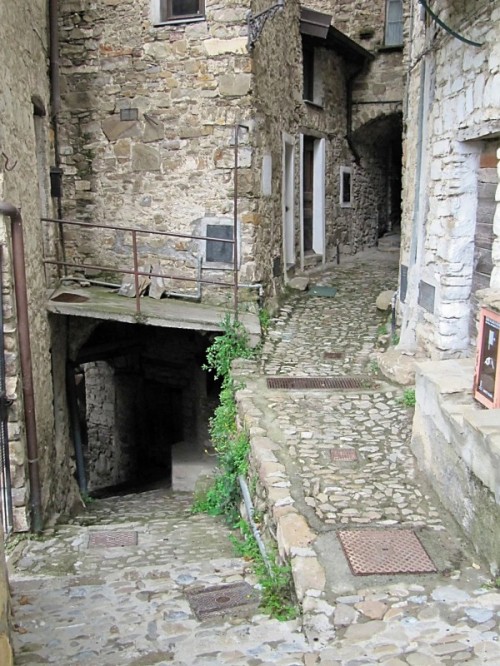

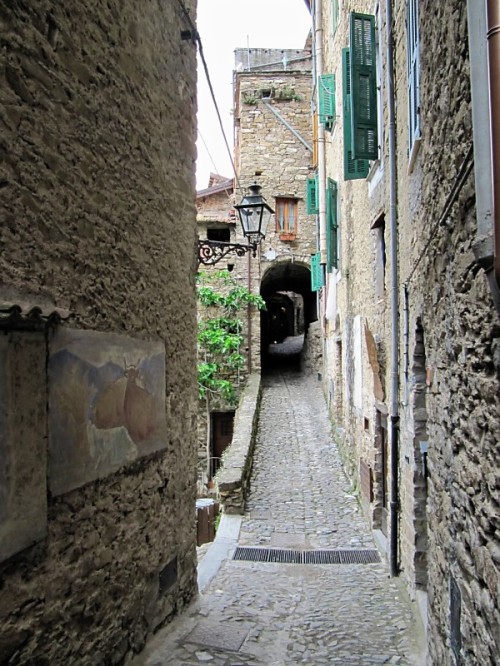

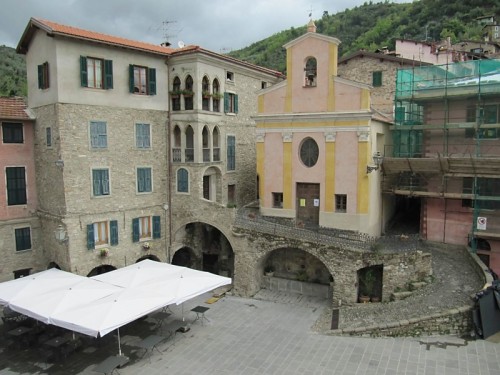









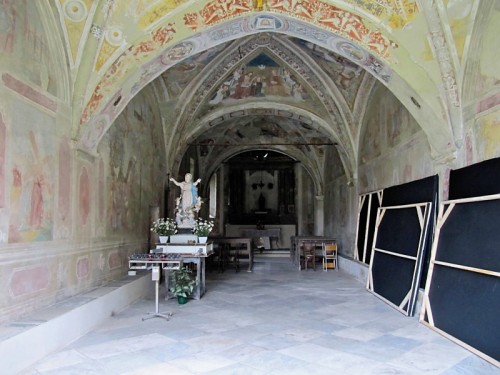










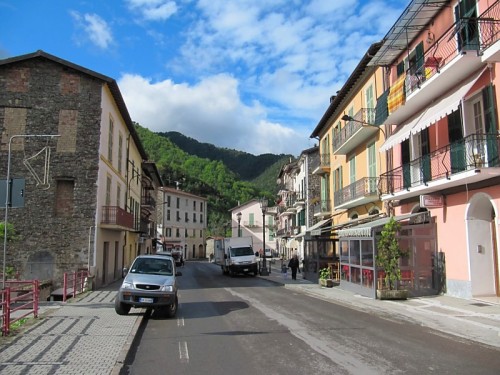
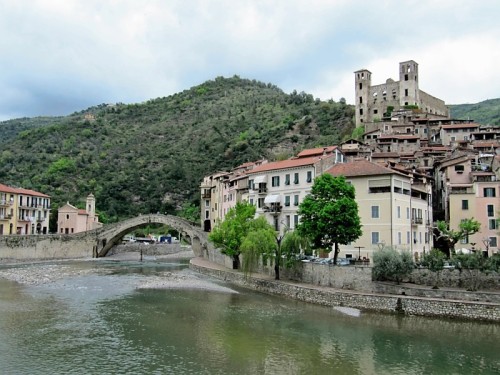
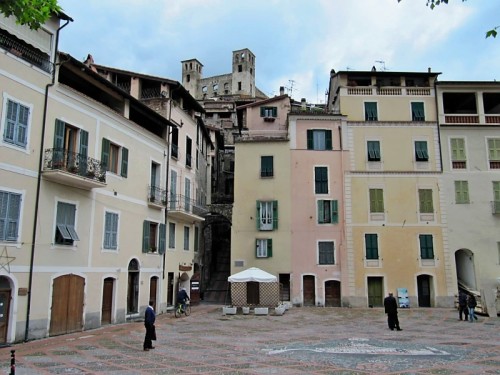



Hey! Some very cool pictures. Will put Apricale on my to-do list.
By: Bruce on May 17, 2010
at 1:13 pm
I want to go to there.
Apricale is like an ideal version of an Italian village that you read about in a children’s book.
By: Sarah C on May 18, 2010
at 7:04 am
[…] boarded a train in Menton bound for Ventimiglia, the Italian border town we used to access Apricale earlier in the […]
By: Ten Trains, a Bus, and a Cable Car « Cape to Milan on May 20, 2010
at 4:23 am
[…] Earth explorations over the years, which have in the past uncovered some pretty fascinating places, inclined me to push ahead and rent a car. Better yet, I managed to rope someone else from the […]
By: Into the Countryside | Cape to Milan on June 18, 2015
at 1:26 pm
[…] example, that’s how he found these fairy tale Italian villages and palm-tree laden Menton, […]
By: Three Tips for Finding New Travel Spots – Caro Sumners on July 19, 2017
at 8:31 pm
[…] example, that’s how he found these fairy tale Italian villages and palm-tree laden Menton, […]
By: Three Tips for a Crafting a Unique Travel Itinerary – Caro Sumners on July 19, 2017
at 8:57 pm
[…] trip (see: Trebinje, a pretty, untouristed ethnic Serbian town an hour bus ride from Dubrovnik, or Apricale, a gorgeous Italian hill town a stone’s throw from the French Riveria). Typically I hunt for […]
By: Cacalotenango Waterfall | Cape to Milan on January 16, 2018
at 2:43 am